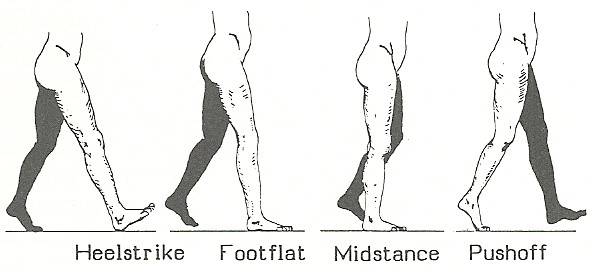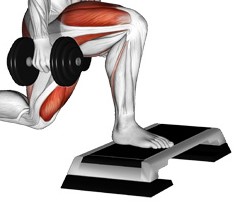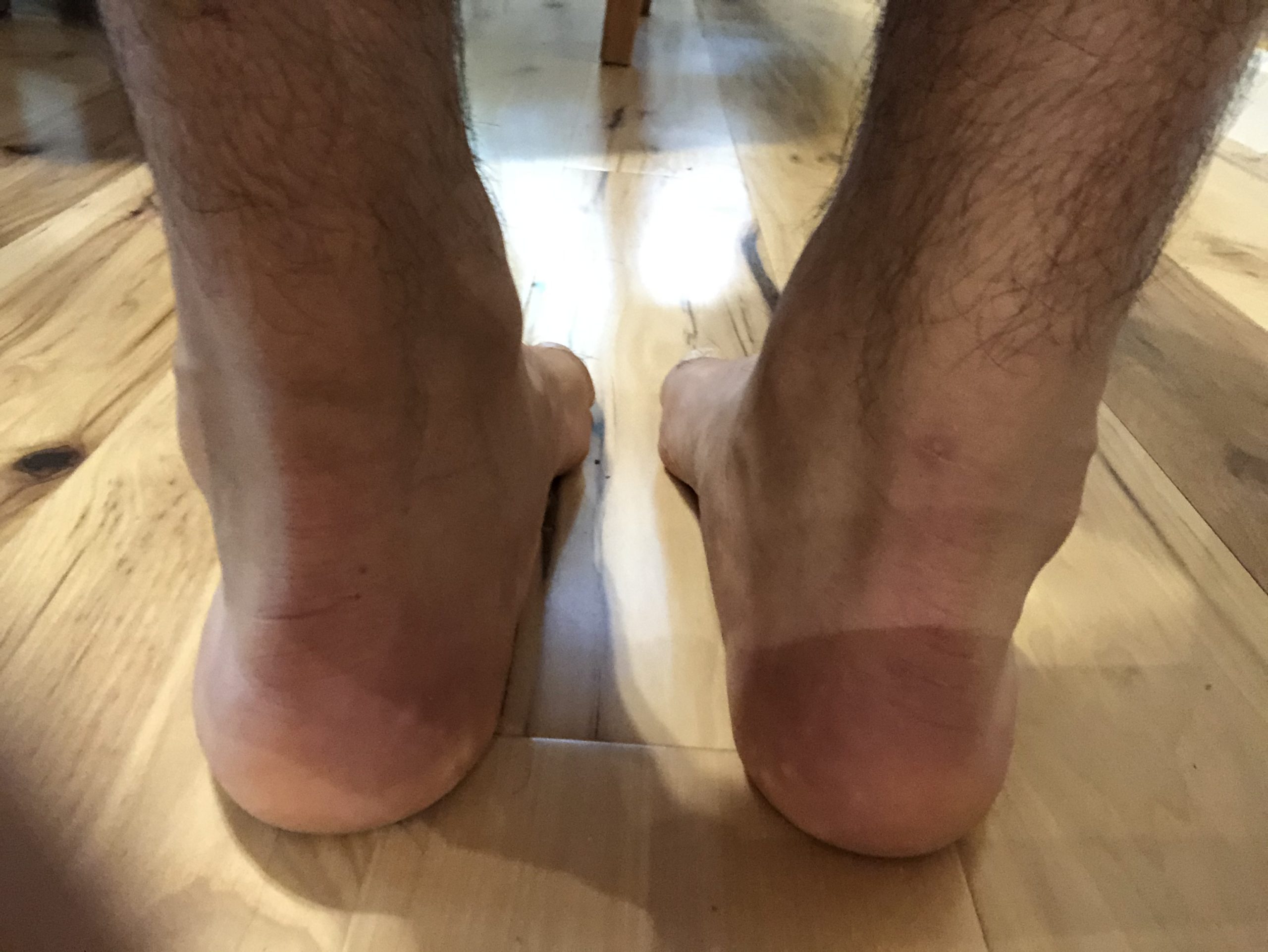Tim has really grown to love training. Now in his fifties, he hadn’t done much stressful activity since his high school days. Like many, a major impediment was his struggles with discomfort when trying to exercise and remain active. Together, we were able to really train for his fitness goals, and not treat him like a rehab patient – he just needed some useful answers to his questions and effective tactics with his exercise selection. He has had a great transformation that allows him to be active five days a week.
As Tim has pushed to do more, other minor obstacles have come to fruition and been overcome. Currently, he has been attempting a deep squat and more complex combinations of movements such as a reverse lunge to step-up. This has led to some minor knee discomfort.
The knee is essentially a “dumb” joint and its movement capabilities, and resultant pressure in the area, are largely impacted by the influence of the adaptability of the hips and/or the feet. His regular in session assessments show his hips can regain good motion, but he does lose a degree of this movement capability between workout sessions. The outlier is his presentation of excessively flat feet.
While in the gym we can choose exercise positions that take Tim off his feet or unweight his feet to help him regain motion in most his body. When Tim is outside the gym, he currently loses some of the movement in his hips because the environment is not controlled. He has shoes that do help some, but adaptation to the foot need to be made to make changes really stick. So, the goal is to synchronize his foot mechanics with his hips.
Walking Mechanics as a Model of Movement
We use gait mechanics of the entire skeleton as a model for the positions and timing of transitions at the joints. This can show which areas have adequate motion and control with change, and which may be lacking. Then we can recapture movement and remove pressure from the joints by matching the appropriate position at each joint and maintain those positions through specific phases of human locomotion.
A very simple model of how the foot functions during walking is:
- A rigid foot with an arch on heel contact until the entire foot touches the ground.
- A looser, flat appearing foot as the body transitions over the foot.
- A rigid foot with an arch as the body weight moves past the middle of the foot and through the heel leaving the ground.
There are mechanics of the pelvis, and the rest of the body, that would match these foot positions. A more in-depth discussion is beyond the scope of this article, but some of the pelvis concepts are discussed here.

The simple model of the foot leads to ideas on which exercises Tim should execute and how he can bias specific positions during each task; doing so allows Tim to recapture his ability to effectively respond to a fitness challenge without an uncomfortable, possibly detrimental, strategy. Sometimes, a simple verbal cue may be enough to change the way an exercise is performed, other times we may have to create constraints to help his body move a specific way. We can then test and re-test a movement to see if Tim created a positive change – or possibly a negative one – and tinker with the exercise to calibrate it to achieve our desired goal.
Take Away What They Are Too Good At
In the case of Tim’s flat feet, this may include verbal cues about how much of his knee we want drifting toward the toes when performing an exercise in the half kneeling position, or maybe it’s to work on keeping his body weight behind his front heel on a front foot elevated split squat. In both of these scenarios Tim would be attempting to keep his foot from moving too much into a position where the foot naturally will flatten some. He is too good at using strategies to flatten his feet, so I want to take those away from him. Thus, he will learn how to make some rigid foot positions.

Sometimes just coaching the position or unweighting the foot to bias the strategies we want is not enough. We will need to take away an individual’s access to a certain motion and/or supply more structural support.
A couple ways the range of motion of the foot may be restricted by either elevating the heel or by elevating the toes. These positions should move the foot and ankle into more mechanically rigid positions that are utilized in earlier phases of human locomotion when the foot hits the ground. Once again, not allowing the regular “flattening” phase of the foot in human gait to occur, but rather a phase that would have an arch of the foot.
Adding more structural support to the foot may be warranted when restricting access to the “flattening” phase of foot motion is not enough. We would still use a constraint to bias the foot toward a more rigid arch position, and then add a splint of some sort under the arch to bolster it. This is great to use in staggered stance, static step-up, and ½ kneeling positions first to monitor the outcome. Progress the complexity by adding more movement with something like split squats, and note if the desired strategy is maintained.
All Flat Feet Are Not The Same
There are a few foot presentations that people would call “flat.” Unfortunately, this is one, among many, of the reasons many health/fitness professionals treat all the varieties the same. Obviously, there will be mixed success. Some instances will be more complex because of ankle position and what is occurring up the chain of influence from the rest of the body. Tim’s case is a quick and simple example of the process required to identify a flat foot variety someone presents with, and monitoring the strategy needed to obtain a specific result – all while still exercising!
There are many possible methods of exercise available to help create precise adaptations in specific scenarios such as the ones involving the foot. The goal is to find what is best for your needs. Small changes – to alter joint position, range of motion, timing, etc – to exercise execution is a powerful way to progress effort and create adaptations. This produces exercises that fit our idiosyncratic requirements and a manageable path to greater complexity/difficulty. Thus, someone like Tim constantly challenges himself with variations of familiar exercises and/or he progresses to new, more difficult tasks. His journey toward his fitness goals continues.

